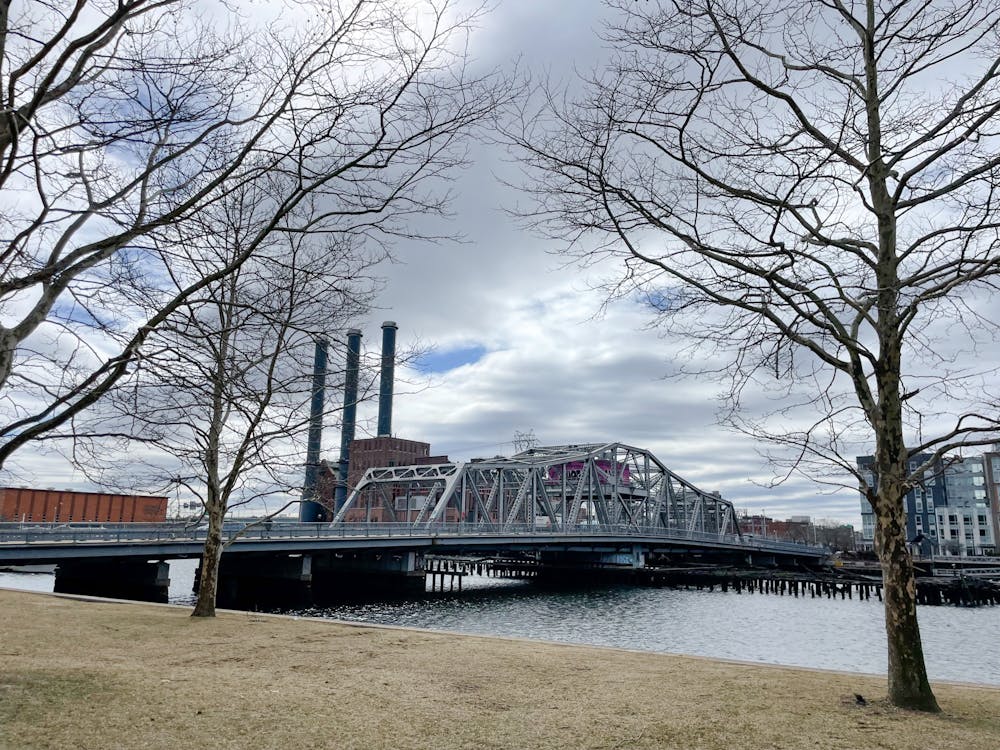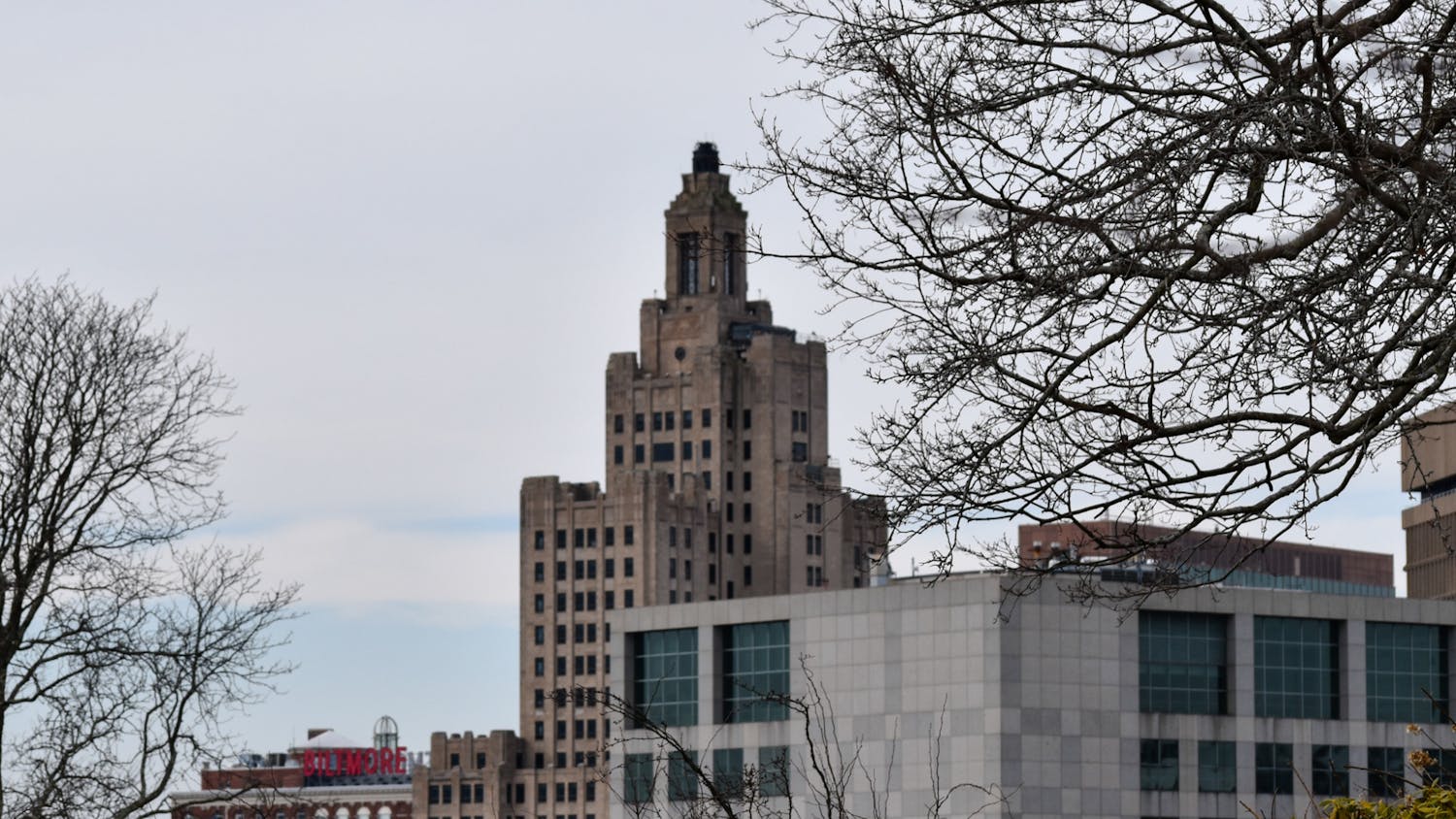The Providence Preservation Society listed all of Providence’s infrastructure on its 2023 Most Endangered Properties List released January, a decision made due to the city’s vulnerability to climate change, according to PPS Advocacy Manager Adriana Hazelton.
“Providence is really suffering from a disinvestment crisis,” Hazelton said.
Failing infrastructure is plaguing many American cities today. The American Society of Civil Engineers gave the United States’ infrastructure — which includes roads, schools, transit and drinking water — a C- in its latest report from 2021.
The Herald spoke with local advocates, professors and policymakers about the state of Providence’s infrastructure. City stakeholders detailed problems with Providence’s buildings, transportation and water supply systems, as well as steps the city can take to guard against the impacts of climate change.
‘Things are crumbling’: Roads, sewers, water systems in disrepair
Providence infrastructure is aging out, according to Senior Lecturer in Environment and Society Kurt Teichert.
“No matter where you go there’s flooding, things are crumbling (and) there’s safety issues with buildings,” Hazelton said. But according to Hazelton, the city’s infrastructure aging is not the sole reason for its failure, but also “whether (structural) maintenance is happening.”
“Mayor Smiley believes that infrastructure has an important role in improving the quality of life of the residents and businesses,” Director of Communications Patricia Socarras wrote in an email to The Herald.
Major infrastructure projects across Providence have been paused since February as Smiley’s administration conducts a review of the projects “to ensure they are accurately meeting (the city’s) needs,” Socarras added.
Smiley’s administration plans to continue the projects laid out in former mayor Jorge Elorza’s Capital Improvement Plan, which addresses infrastructure goals for the city until 2024. The CIP is part of a more long-term “Providence Tomorrow: The Comprehensive Plan,” which outlines general policies relating to “land use and the built environment, housing, economic development, sustainability and the environment, historic preservation, community services, recreation and transportation,” according to the CIP.
According to Teichert, sidewalks and roads across the city that need repavement have long gone untouched. Providence’s Pavement Management Program “has identified 157 miles of unrepaired roads at an estimated cost of $110 million and 214 miles of roadway in need of maintenance with an estimated cost of $25 million,” according to the CIP.
Repavement was part of Mayor Brett Smiley’s plan for the city when he was campaigning for election. “We cannot continue to pave our streets and rebuild our sidewalks, just to have them ripped up weeks later,” Smiley’s campaign website reads.
The estimated cost to repair and maintain the city’s 625 miles of sidewalks is between $142-183 million, the CIP continues. Currently, the city plans to allocate $15-17 million annually to achieve a “trip-free” standard.
But the city’s water systems, which are in similar disrepair, pose a disruption to repavement plans. Because water pipes are often located underground, it is necessary to dig up streets before they are replaced, so comprehensive repavement is not feasible until all water systems are updated, according to Teichert.
Several water pipes around Providence — particularly those that supply private residential properties — contain unsafe levels of lead. The Providence Water Supply Board has been changing the city’s major supply lines, but their work does not include the connections between streets and houses, which increases the risk of lead exposure, Teichert said.
“Every place they have to dig into the street to get the infrastructure, they just patch it,” he added. When “those various levels are completed, they’ll come in and do an evaluation and repave.”
The city’s sewer system, which includes storm, sanitary and combined sewers and is overseen by the Department of Public Works, is also in need of an estimated $50 million in infrastructure investment, according to the CIP. The money is being allocated over the next decade.
‘A longer term view’: Planning with climate change in mind
Beyond addressing the city’s immediate needs, Providence policymakers must investigate the effects of climate change on the city and consider building materials that are more sustainable and durable, Hazelton said.
“These opportunities to address failing infrastructure also give us the opportunity to fix them … with a longer term view,” Teichert said. “How are we fixing it for tomorrow — that puts us in a much better position to take on the challenges and threats we’ll be facing in 2050 and beyond.”
Storm surges, sea level rises, power outages and droughts must be considered when thinking about infrastructure solutions, Hazelton added. “How do we reckon with the fact that we are a town right on the bay, in a state that is called the Ocean State?”
The decision to put all of Providence’s infrastructure on the 2023 MEP list was partially a result of the dangerous floods that occurred on Labor Day, according to Hazelton.
Major city systems, such as the Fox Point Hurricane Barrier, are vulnerable to modern-day storm surges, Teichert said. According to USA Today, sea levels around Providence have risen about five inches since the construction of the barrier.
“The 1960s hurricane barrier serves a 1960s-level hurricane,” Hazelton said. “It's not necessarily going to serve us for all of the additional flooding and crazy weather that we're getting today.”
The City Plan Commission, which is updating Providence’s comprehensive plan, is currently “conducting community engagement and seeking feedback,” wrote CPC Acting Director of Planning & Development Bob Azar in an email to The Herald. “All infrastructure updates will be considered, with special attention paid to climate resiliency and the safety of public rights of way.”
For Teichert, funding is one of the major roadblocks to addressing the city’s failing infrastructure. “Like any enterprise, running a city requires funding.”
In 2021, President Joe Biden signed into law the Infrastructure Investment and Jobs Act, which allocates money for replacing lead pipes, repairing transportation infrastructure and shifting away from old sources of fossil fuel.
But the process of administering funds and making them usable can take time, Teichert said. “There’s help on the way, but there’s a whole process that we have to go through to take advantage of that funding and actually implement it.”
Liliana Greyf is a senior staff writer covering College Hill, Fox Point and the Jewelry District, and Brown's relationship with Providence. She is a sophomore studying Literary Arts and a proponent of most pickled vegetables.





